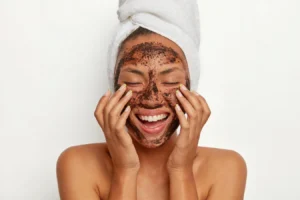Exfoliating Treatments: A Comprehensive Guide to Smoother, Brighter Skin
Exfoliation is a cornerstone of any effective skincare routine, helping to remove dead skin cells, unclog pores, and promote cell turnover. Whether you’re dealing with dullness, acne, or uneven texture, exfoliating treatments can transform your complexion. Here’s everything you need to know about exfoliation, from types and benefits to tips for safe and effective use.

What is Exfoliation?
Exfoliation is the process of removing dead skin cells from the surface of the skin. This can be achieved through physical methods (scrubs, brushes) or chemical solutions (acids, enzymes). Regular exfoliation helps maintain a smooth, radiant complexion and enhances the effectiveness of other skincare products.
Types of Exfoliating Treatments
-
Physical Exfoliation
- Manual Scrubs: Use granular particles (sugar, salt, or microbeads) to slough off dead skin.
- Tools: Brushes, sponges, or exfoliating gloves for gentle buffing.
- Best For: Normal to oily skin types; avoid if you have sensitive or acne-prone skin.
-
Chemical Exfoliation
- Alpha Hydroxy Acids (AHAs): Glycolic acid, lactic acid, and mandelic acid dissolve surface cells.
- Beta Hydroxy Acids (BHAs): Salicylic acid penetrates pores to clear acne and blackheads.
- Enzymes: Papain (from papaya) and bromelain (from pineapple) gently dissolve dead skin.
- Best For: All skin types, especially sensitive or acne-prone skin.
-
Mechanical Exfoliation
- Microdermabrasion: Uses a device to exfoliate and suction away dead skin.
- Dermaplaning: A blade removes dead skin and fine facial hair for a smooth finish.
- Best For: Those seeking professional-level results with minimal downtime.
Benefits of Exfoliation
- Brighter Skin: Removes dull, dead cells for a radiant glow.
- Smoother Texture: Reduces roughness and unevenness.
- Clearer Pores: Prevents clogging and reduces breakouts.
- Enhanced Product Absorption: Allows serums and moisturizers to penetrate deeper.
- Anti-Aging: Promotes collagen production and reduces fine lines.
How to Exfoliate Safely
- Choose the Right Product: Match the exfoliant to your skin type and concerns.
- Frequency:
- Physical: 1–2 times per week.
- Chemical: 2–3 times per week (start slow and build tolerance).
- Patch Test: Always test new products to avoid irritation.
- Avoid Over-Exfoliation: Redness, dryness, and sensitivity are signs of overuse.
- Follow with Hydration: Use a moisturizer to replenish the skin barrier.
Professional Exfoliating Treatments
- Chemical Peels: Customizable solutions for deeper exfoliation.
- Laser Resurfacing: Targets deeper layers for dramatic results.
- HydraFacial: Combines exfoliation, extraction, and hydration in one treatment.
Common Mistakes to Avoid
- Using harsh scrubs on sensitive skin.
- Exfoliating too frequently, leading to irritation.
- Skipping sunscreen, as exfoliation increases sun sensitivity.
- Mixing incompatible acids (e.g., AHAs with retinoids).
Conclusion
Exfoliating treatments are a powerful tool for achieving healthy, glowing skin. Whether you prefer at-home methods or professional procedures, the key is to exfoliate wisely and consistently. Always listen to your skin’s needs and consult a dermatologist for personalized advice. With the right approach, exfoliation can unlock your skin’s full potential.
